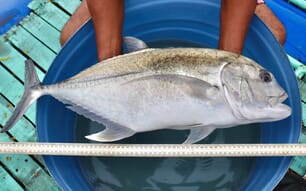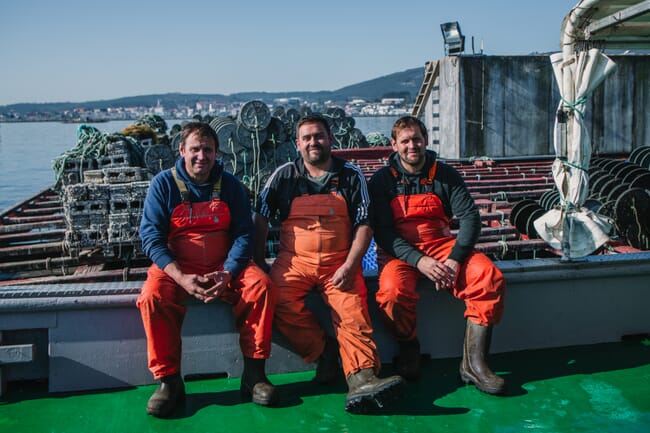
Jose Manuel, Antonio and Roberto are the second generation of their family to operate the famous bateas (floating rafts) that are the mainstay of Galicia’s extraordinary mussel farming sector.
The region is blessed by a combination of coastal upwelling and tide patterns that promote the production of huge phytoplankton blooms, particularly in the spring and autumn. In the 1940s the first bateas were installed on the rias and they rapidly evolved to become home to a thriving shellfish sector. Most famous for its Mediterranean mussels – there’s no coincidence that the second part of their Latin binomial is galloprovincialis – Galicia has over 3,300 of these rafts. Between them they produce an astonishing 250,000 tonnes of mussels – accounting for almost half of the 600,000 tonnes of the bivalves consumed in Europe each year.
The region’s mussels rafts continue to provide livelihoods to some 8,000 farmers, who operate in a manner largely unchanged since their inception. The docks around Caraminal are home to hundreds of colourful boats, each different, but each armed with the crane that is the mussel farmer’s most vital piece of equipment. Each is owned by small, independent producers, many of whom are from the same families.
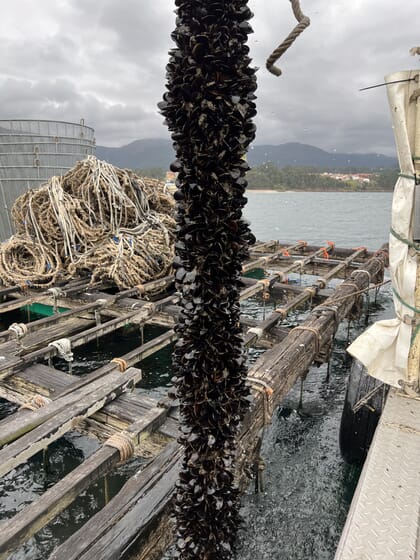
Despite their respect for tradition, in 2018 the brothers – who’ve been operating bateas since 2006 – decided to experiment with using some of their rafts for ongrowing clams.
“The idea was to grow a different species other than mussels. We saw an existing demand for clam seed which needed to be bigger than those coming from a hatchery. Applying our knowledge from mussel growing on mussel rafts, we now use the procedure to grow clams on the bateas,” explains Jose Manuel, when he meets The Fish Site on the dock at Caraminal.
Two years later and the brothers have five clam bateas – four in Cambados marine industrial park and one in Pobra do Caraminal – as well as the five mussel bateas that they inherited from their father and now trade under the name of Proameixa, one of five companies that use lantern nets as clam nurseries.
As we reach the first batea – a grid of weathered eucalyptus beams which is anchored to the seabed 15 m below – Jose Manuel explains that they buy clams from the hatchery when they are one or two millimetres wide and then stock them in 8-tray lantern nets, which protect the bite-sized bivalves with a double layer of mesh. Up to four nets can be suspended off each of the 500 ropes that hang from each batea. This equates to a lot a clams – currently 100 million a year, according to Jose Manuel.
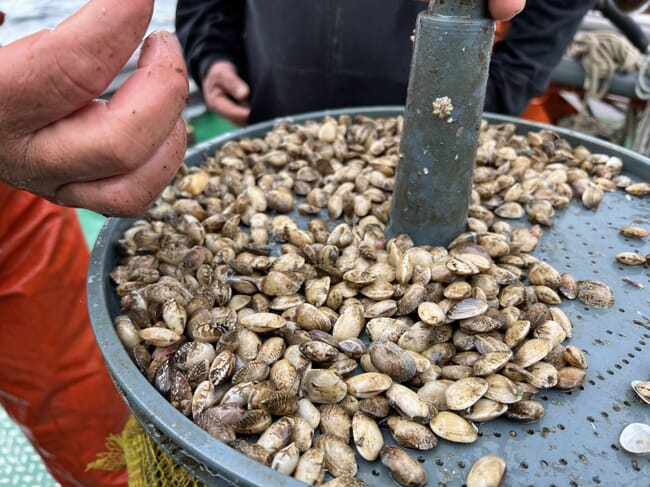
The brothers keep them in the nets for a period of six months, by which time those that have not been eaten by predators, such as starfish and crabs, should have reached a size of 15 to 18 mm. According to Jose Manuel, this is the optimal side size for ongrowing in the shellfish banks along the beaches of Galicia, and they have no shortage of customers – the rias are full of shellfish farmers, such as the 1,200 who make up the Parquistas de Carril.
These farmers, explains Antonio, then use tractors to seed the clams along their concession on the beaches. They’re stocked at densities of around 800 per square metre. Unlike sowing crops on land – the bivalves seed themselves once they’ve been scattered on the sand.
Once buried, the clams take another six months or so to reach market size. And, thanks to the brothers, they should now be large enough to be safe from most predators.
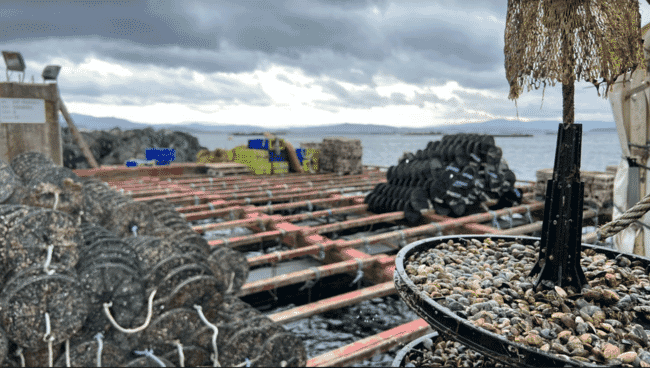
However, Jose Manuel and Antonio add that nothing is safe from the voracious “Carneiro”, the local name for a species of large-headed ray which can hoover up hundreds of clams in seconds and is the public enemy number one for the region’s clam farmers.
The good news – both for the rays and the farmers – is that the brothers have plans to double or even triple their production in the coming years. They also plan to look into diversifying from the four clam species – japonica (Ruditapes philippinarum), babosa (Venerupis corrugata), fina (Ruditapes decussatus) and rubia (Venerupis rhomboides) that they currently produce.
“We would also like to carry out the part growing or final growing of other species of shellfish – including scallops, queen scallops and oysters – from the bateas,” explains Jose Manuel.
Whether they will soon be joined on the bateas by their children remains to be seen. But, given that Jose Manuel and Antonio both have two sons, it seems possible that a third generation of the Fernandez Muniz clan will take to the water before too long. All the more so if their fathers succeed in making a successful business from the evolution of the family firm.



